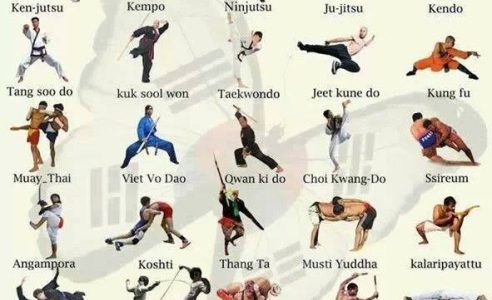Exploring The Differences Between Typical Martial Arts And Contemporary Combat Sports
Exploring The Differences Between Typical Martial Arts And Contemporary Combat Sports
Blog Article
Created By-Keith Haagensen
When you think about martial arts, do you lean much more toward the standard techniques or the modern-day battle sporting activities? get more info supplies one-of-a-kind benefits and experiences, shaped by their philosophies and training methods. Traditional martial arts emphasize personal growth and technique, while contemporary battle sports focus on competitors and performance. Recognizing these distinctions can direct you in picking the best strategy for your trip. Yet exactly how do go source show up in training and philosophy?
The Viewpoint and Background Behind Conventional Martial arts
While many people associate martial arts with physical battle, the philosophy and background behind traditional martial arts run much deeper. You'll discover that these self-controls highlight personal development, discipline, and regard.
Stemming from old techniques, conventional martial arts were usually developed for Self-Defense and spiritual advancement. They embody principles such as equilibrium, harmony, and self-discipline, assisting practitioners past mere fighting abilities.
As you educate, you'll not just find out techniques but additionally obtain insights into the culture and values that formed these arts. The rituals and traditions, often passed down via generations, promote a feeling of area and belonging.
The Affordable Nature of Modern Battle Sports
Modern fight sporting activities have changed the landscape of martial arts into an extremely competitive arena, where professional athletes take on in an examination of ability, technique, and endurance.
You'll observe that competitors are frequently arranged with strict guidelines and regulations, ensuring fair play and security. These events bring in big target markets, fueling the exhilaration and strength of matchups.
Athletes educate rigorously, not just for physical prowess yet likewise for psychological toughness, recognizing that every detail counts in the ring. The adrenaline thrill throughout competitors is palpable, as boxers press their limits to claim success.
Followers appreciate the athleticism and virtuosity included, making contemporary fight sporting activities a thrilling phenomenon that continues to advance and astound enthusiasts worldwide.
Training Methods and Strategies: A Comparative Evaluation
The competitive environment of contemporary combat sporting activities demands innovative training approaches that differ considerably from conventional martial arts.
In modern training, you'll concentrate on particular methods, sparring, and conditioning, commonly utilizing drills that simulate actual battle situations. You'll see an emphasis on measurable performance and constant competition to evaluate your abilities.
On go to the website , traditional martial arts focus on forms, katas, and thoughtful trainings, often highlighting discipline and regard over competition.
Training is usually much less extreme and may include recurring technique instead of real-time sparring.
While both techniques construct ability and fitness, modern-day fight sporting activities offer a more vibrant and versatile training atmosphere, preparing you for immediate difficulties in the ring or cage.
Select the path that straightens with your goals and interests.
Conclusion
In selecting in between standard martial arts and modern-day fight sports, it actually comes down to what you value most. If you're searching for personal development, self-control, and a feeling of area, conventional arts might be your finest fit. Yet if you thrive on competitors and real-time difficulties, modern fight sports could be the means to go. Inevitably, both courses offer one-of-a-kind benefits, so it's everything about aligning your training with your personal goals and rate of interests.
